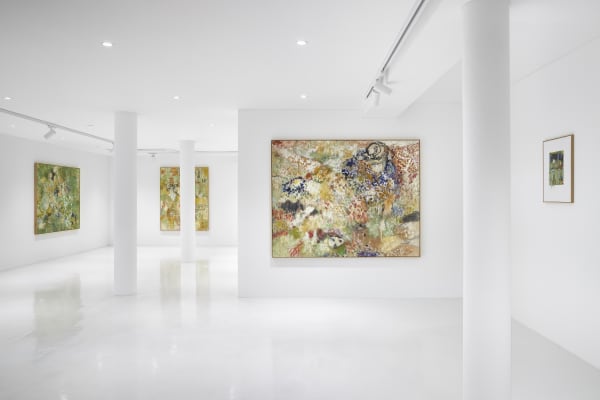Ted Gahl: Boda
The title of Ted Gahl's solo exhibition is Boda—a transliteration of the Korean verb "보다," rather than its literal English translations such as "to see" or "to look at." While "보다" is commonly used to describe the act of seeing with one's eyes, it also functions in Korean as an auxiliary verb, as in expressions like "to try doing" or "to experience." In this sense, "보다" extends beyond visual perception to encompass the act of experiencing itself.
In Gahl's paintings, the act of looking serves as both a point of entry and a recurring theme, but the experience conveyed is not confined to the visual, nor does it rely on clearly defined narrative structures. Rather than attempting to articulate the layered impressions of his paintings through a string of explanatory words, the artist and curators chose the multifaceted verb Boda as the exhibition title-an evocative gesture that embraces the complexity and ambiguity of Gahl's work.
What Gahl has "seen" or "experienced" sometimes emerges in figurative forms rooted in specific memories or situations; at other times, it appears as abstraction or as forms that dissolve in the space between the two. Drawing inspiration from the suburban environment of his youth and the natural world around us, Gahl often employs subdued, desaturated tones. Although his work leans toward abstraction, he captures poignant and melancholic emotions that only figuration can elicit. Works such as Cloud, Son, and Figure (Drifting Off) depict particular moments-someone looking at the sky, a father guiding his child, or a person caught in the haze of sleep.
In paintings like In the Trap (Garden 2), Twin, and Rocks with Lichen, Gahl uses loosely stretched canvas, allowing large creases to remain visible on the surface. These folds, seemingly unintentional and casually present, bring a tactile, object-like quality to the work and subtly remind the viewer of painting's physical reality in three-dimensional space.
Elsewhere, in works like Arrival and Sister, abstraction blends with traces of figuration, producing images that hover on the edge of recognition-figures dissolving into the background, indistinguishable from the fields of color that envelop them. These paintings reveal the artist's interest in the "air" surrounding the human body, and the relationship between the two.
The Borneo Protest series introduces a more structured and repetitive visual rhythm compared to Gahl's other works. Uniquely, these paintings are based on distorted satellite imagery of university campuses sourced from Google Maps. In an era when so much of our perception and experience is mediated through screens, the act of seeing has become increasingly indirect. The meaning of "environment" has also evolved; once synonymous with "nature," it now shifts in pace with a rapidly changing world. Within this new terrain, our bodies blend with the external world or sometimes become disoriented within it.
As a witness to these shifting sensations, Gahl remains faithful in recording what he sees and experiences-translating it into a language of paint that is at once perceptual, embodied, and affective.
— Junyoung Lee









